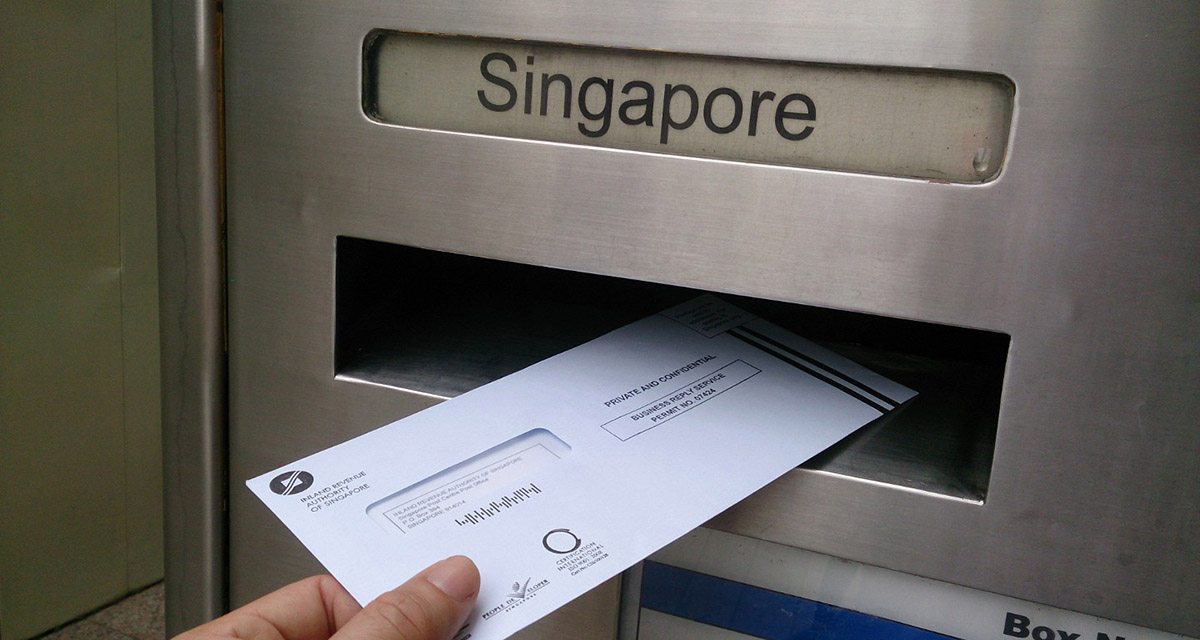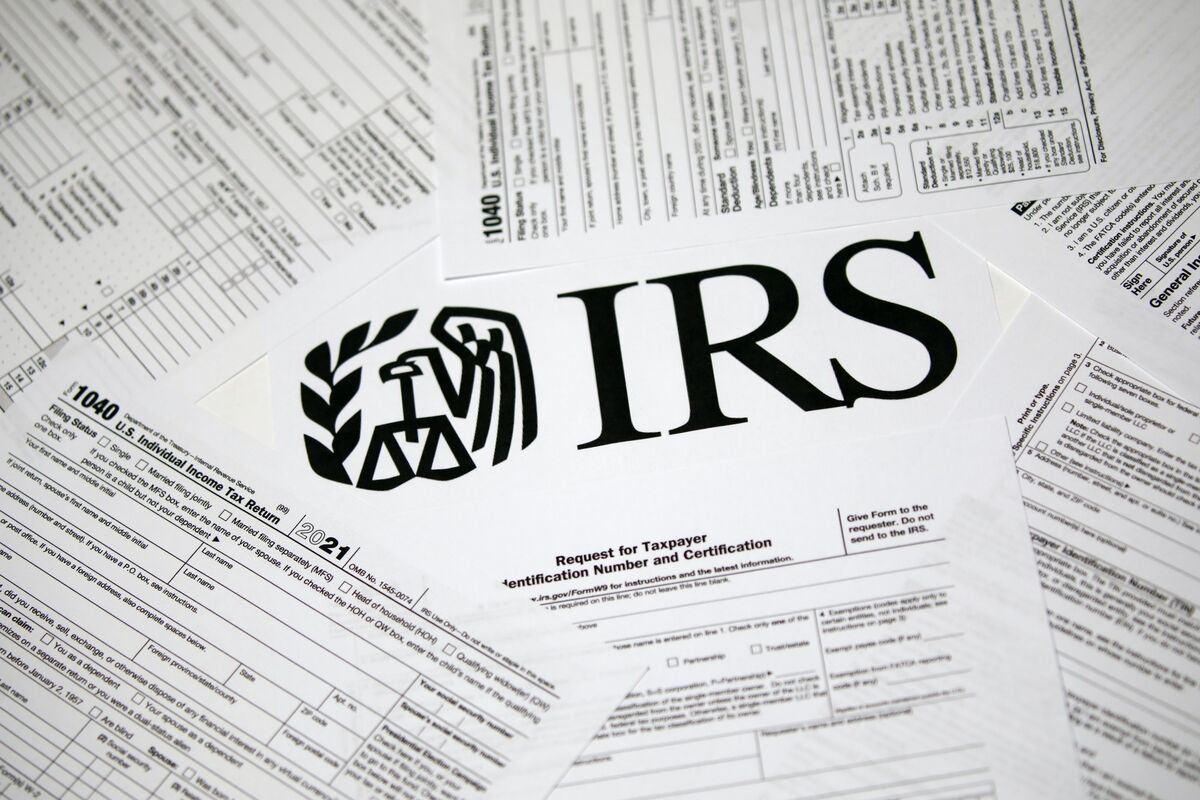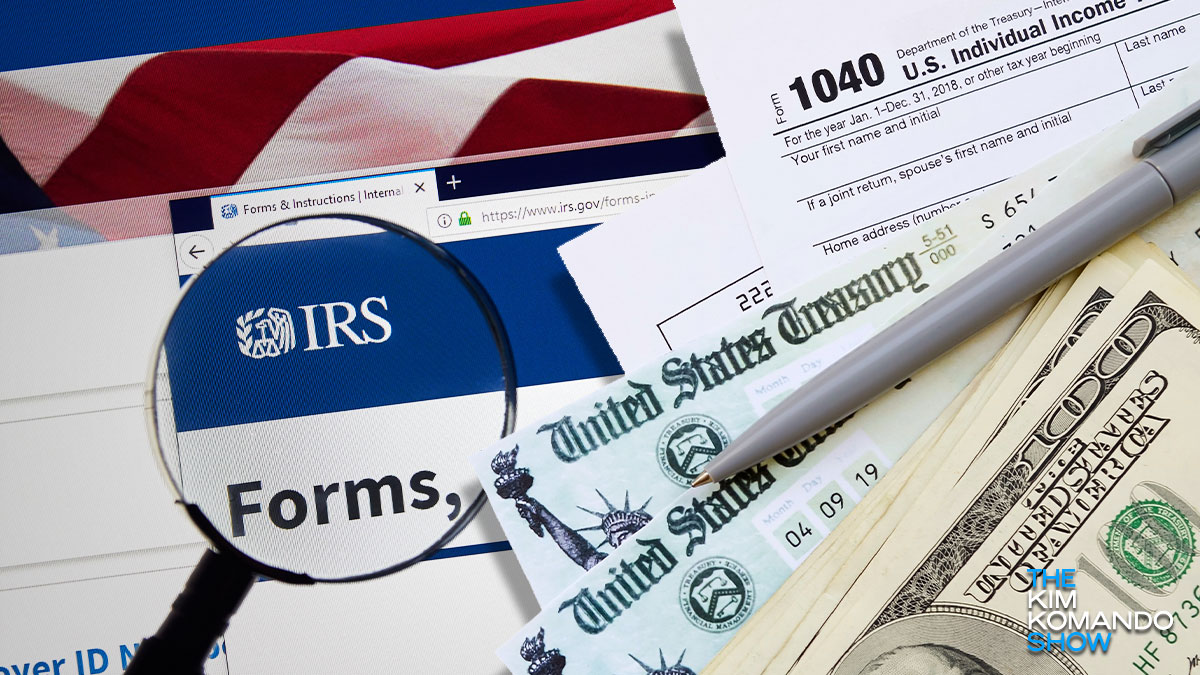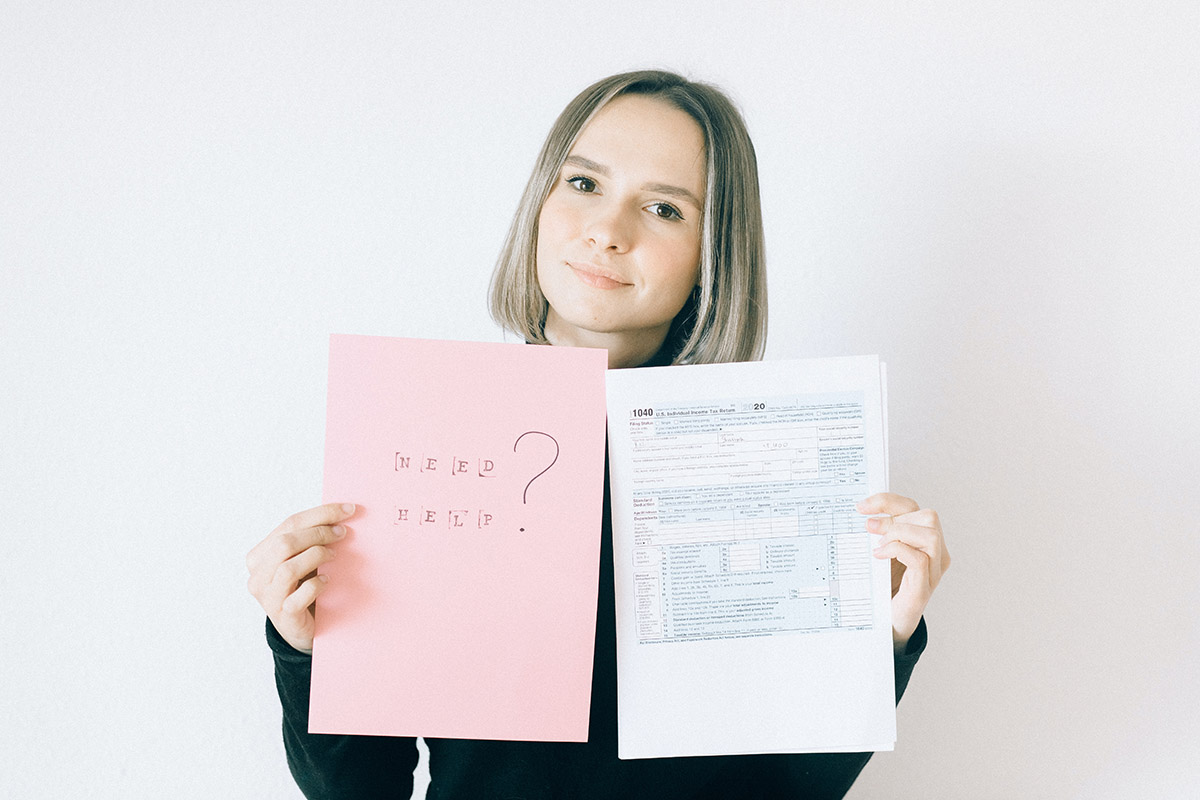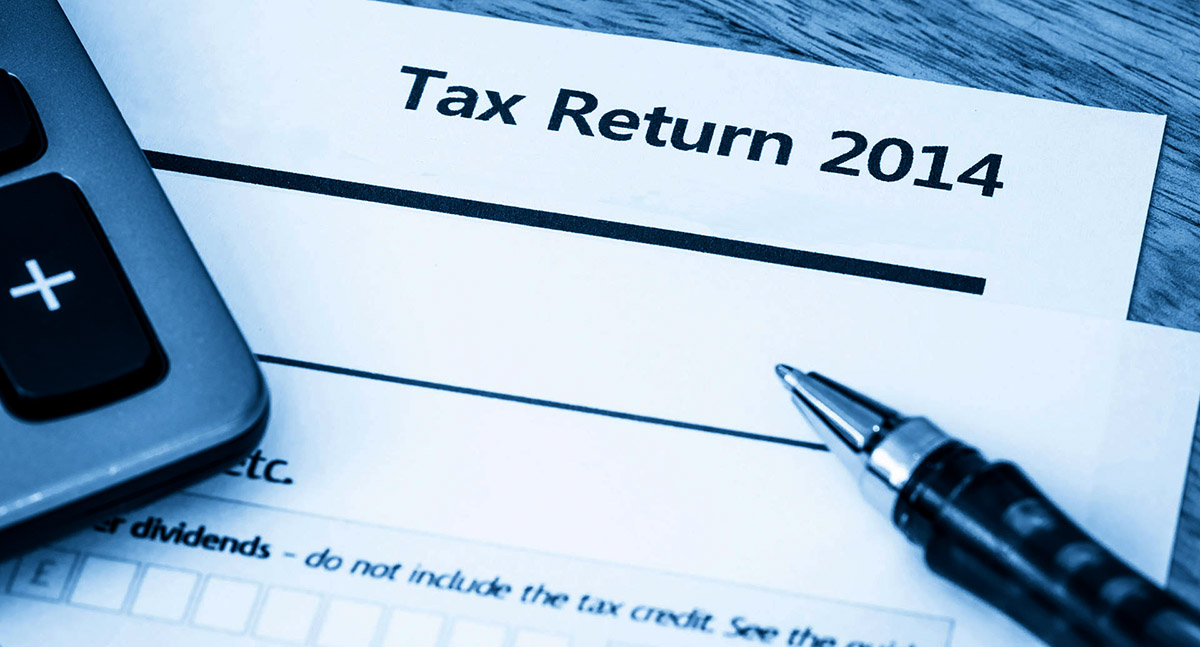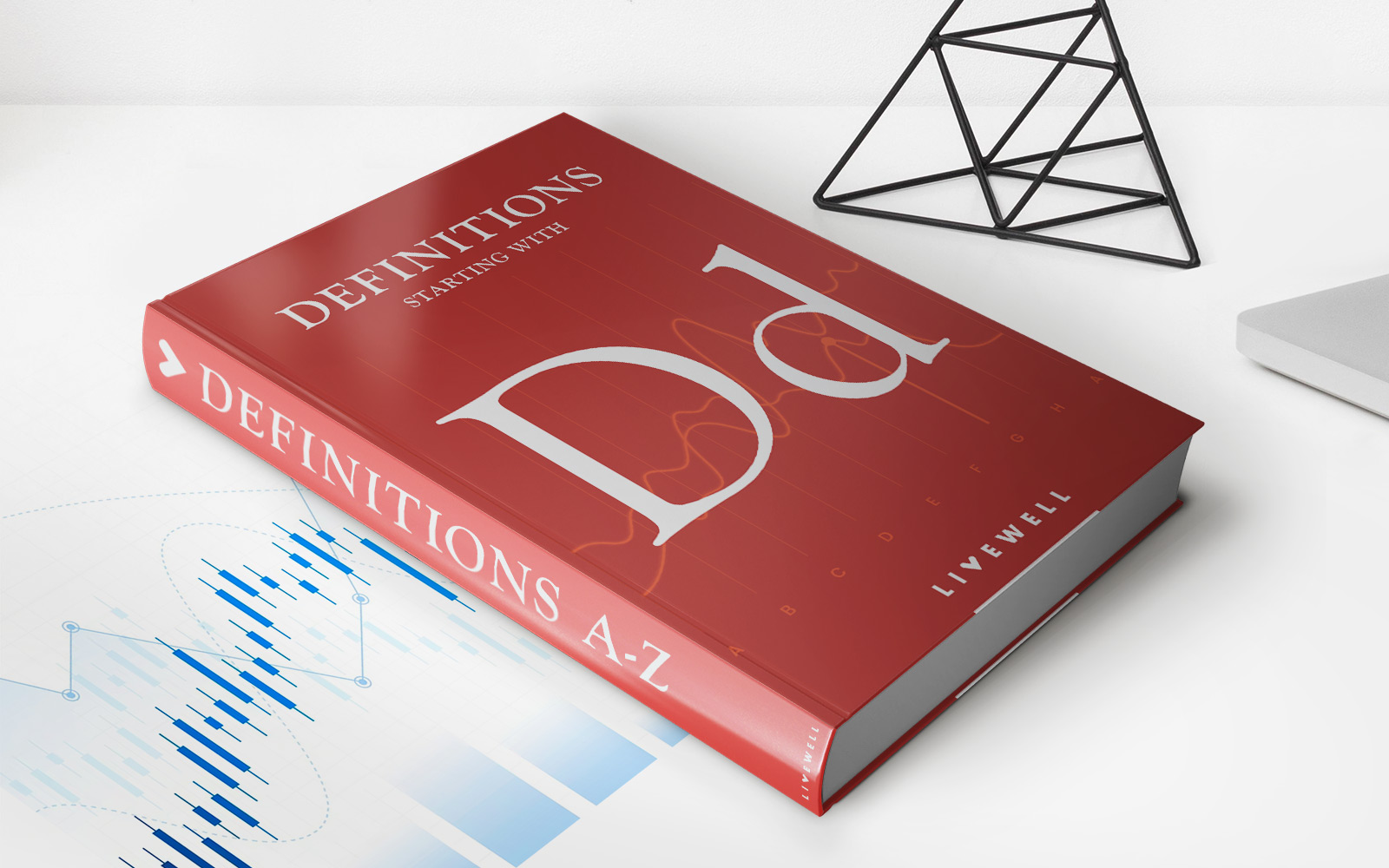

Finance
Where Does Form 5498 Go On A Tax Return?
Published: October 28, 2023
Learn where to report Form 5498 on your tax return and ensure your finances are in order. Maximize deductions and streamline your filing process.
(Many of the links in this article redirect to a specific reviewed product. Your purchase of these products through affiliate links helps to generate commission for LiveWell, at no extra cost. Learn more)
Table of Contents
- Introduction
- Overview of Form 5498
- Understanding the Purpose of Form 5498
- Determining Whether Form 5498 Needs to Be Included in Your Tax Return
- Reporting Form 5498 Information on Your Tax Return
- Form 5498 and Traditional IRA Contributions
- Form 5498 and Roth IRA Contributions
- Form 5498 and SEP IRA Contributions
- Reporting Form 5498 for Other Types of Retirement Accounts
- Conclusion
Introduction
Welcome to your comprehensive guide on Form 5498 and where it goes on your tax return. Tax season can be a daunting time, especially when it comes to understanding all the different forms and where to include them. Form 5498 is one such form that you may be required to submit along with your annual tax return. In this article, we will break down the purpose of Form 5498 and help you determine whether it needs to be included in your tax filing.
Form 5498, officially known as the “IRA Contribution Information,” is a document that is provided by the financial institution managing your retirement account. It outlines the contributions made to your Individual Retirement Account (IRA) or other similar retirement accounts throughout the tax year. It is essential to understand the purpose of Form 5498 and how it affects your tax return.
Whether or not you need to include Form 5498 in your tax return depends on the type of retirement account you have and the contributions you have made. In general, Form 5498 is not required to be attached when filing your tax return, but the information provided on the form may affect certain deductions or credits you claim.
In the following sections, we will explore the various types of retirement accounts and how Form 5498 may factor into your tax filing. We will discuss traditional IRA contributions, Roth IRA contributions, SEP IRA contributions, and other types of retirement accounts.
By the end of this article, you will have a clear understanding of when and where to include Form 5498 on your tax return, ensuring that you comply with tax regulations and take advantage of any applicable deductions or credits.
Overview of Form 5498
Before diving into the details of where Form 5498 goes on your tax return, let’s begin with an overview of what the form entails. Form 5498 serves as a summary of contributions made to your retirement accounts throughout the tax year.
Here are some key points to understand about Form 5498:
- Form 5498 is typically provided by the financial institution that manages your retirement account, such as a bank, brokerage firm, or mutual fund company.
- The form reports various types of contributions, including traditional IRA contributions, Roth IRA contributions, and SEP IRA contributions, among others.
- It also provides information on rollovers, conversions, recharacterizations, and fair market values of the retirement assets.
- The form is primarily used for informational purposes and is not required to be included with your tax return (with certain exceptions).
- The financial institution is required to send you a copy of Form 5498 by May 31st of the year following the tax year in which the contributions were made.
Form 5498 plays a vital role in ensuring the accuracy of your tax filing and helps the IRS assess the compliance of taxpayers when it comes to retirement contributions. It provides a detailed record of your retirement account activities for the tax year.
Now that you have a general understanding of what Form 5498 is and its purpose, let’s delve deeper into whether you need to include this form with your tax return or not.
Understanding the Purpose of Form 5498
Form 5498 serves an important purpose in the realm of tax filing, particularly for individuals who have contributed to retirement accounts throughout the tax year. The primary function of Form 5498 is to provide the IRS with information about these contributions and other pertinent details regarding your retirement accounts.
Here are some key purposes of Form 5498:
- Record of Contributions: Form 5498 provides a record of the contributions made to your retirement accounts, such as traditional IRA, Roth IRA, SEP IRA, or other retirement plans. It includes contributions made by you, as well as contributions made by your employer, if applicable.
- Verification for IRA Deductions: If you made contributions to a traditional IRA, Form 5498 helps verify your eligibility for a deduction. The information on the form helps the IRS determine if you exceeded the contribution limits or if your contributions are eligible for a deduction on your tax return.
- Basis for Determining Rollovers: Form 5498 also includes information about rollovers, conversions, and recharacterizations of retirement assets. This information is crucial for calculating any taxes or penalties associated with these transactions.
- Fair Market Values: The form reports the fair market value of your retirement assets. This value is used to determine any potential gains or losses when withdrawing or converting funds from your retirement account.
- Compliance Monitoring: Form 5498 aids the IRS in monitoring compliance with retirement account contribution limits and tax regulations. It helps ensure that individuals are not exceeding their allowable contribution limits and provides transparency to the IRS regarding retirement account activity.
It is important to understand that while Form 5498 provides valuable information for tax purposes, it is not typically required to be attached to your tax return. However, certain circumstances may require you to submit the form along with your tax filing.
In the next section, we will explore whether Form 5498 needs to be included in your tax return based on the type of retirement account and contributions made.
Determining Whether Form 5498 Needs to Be Included in Your Tax Return
When it comes to including Form 5498 with your tax return, the general rule is that it is not required to be attached. However, there are certain circumstances where you may need to include Form 5498 or use the information from the form to complete your tax filing accurately.
Here are some factors to consider in determining whether Form 5498 needs to be included in your tax return:
- Traditional IRA Contributions: If you made contributions to a traditional IRA, the amount reported on Form 5498 may be relevant for claiming a deduction. In this case, you will need to use the information from the form to complete Form 1040 or Form 1040A, specifically on the line for traditional IRA deductions.
- Roth IRA Contributions: Contributions to a Roth IRA are not tax-deductible, so there is generally no need to include Form 5498 for these contributions. However, it is important to keep a record of your Roth IRA contributions for future reference and to ensure accurate reporting of your retirement account activity.
- SEP IRA Contributions: If you are self-employed or a small business owner and made contributions to a Simplified Employee Pension (SEP) IRA, the information on Form 5498 may be required for calculating your self-employment tax and determining SEP IRA deductions.
- Other Retirement Accounts: Form 5498 includes information on various types of retirement accounts, such as SIMPLE IRAs, Keogh plans, and 401(k) plans. Depending on your specific situation, you may need to use the information from the form to report contributions, rollovers, conversions, or other retirement account activity on your tax return.
It is crucial to review the instructions for your specific tax form (e.g., Form 1040 or Form 1040A) and consult with a tax professional if needed to ensure that you accurately report your retirement account activity on your tax return. While not always required to be attached, the information from Form 5498 may impact deductions or credits you claim.
In the next section, we will discuss how to report Form 5498 information on your tax return for different types of retirement accounts.
Reporting Form 5498 Information on Your Tax Return
Now that you have determined whether Form 5498 needs to be included with your tax return based on your retirement account contributions, let’s explore how to report the information from Form 5498 on your tax filing.
The reporting of Form 5498 information will vary based on the type of retirement account and the tax form you are using. Here are some general guidelines:
- Traditional IRA Contributions: If you made contributions to a traditional IRA and are eligible for a deduction, you will report the deductible amount on either Form 1040 or Form 1040A. On Form 1040, you will report the amount on line 32, while on Form 1040A, you will report it on line 17.
- Roth IRA Contributions: Contributions to a Roth IRA are not tax-deductible, so there is no need to report them on your tax return. However, it is essential to keep a record of your contributions for future reference.
- SEP IRA Contributions: If you made contributions to a SEP IRA as a self-employed individual or small business owner, you will report the deductible portion on either Form 1040 or Schedule C (if you are self-employed). The amount will be included in the calculation of your self-employment tax and may impact the calculation of your overall tax liability.
- Other Retirement Accounts: For other types of retirement accounts, such as SIMPLE IRAs, Keogh plans, or 401(k) plans, you will need to review the specific instructions for your tax form. The information from Form 5498 may be relevant for reporting contributions, rollovers, conversions, or fair market values on your tax return.
It is crucial to carefully review the instructions for your specific tax form and consult with a tax professional if needed to ensure that you accurately report the information from Form 5498 on your tax return. Mistakes or omissions in reporting retirement account contributions can lead to penalties or missed opportunities for tax benefits.
Remember, while Form 5498 is not typically required to be attached with your tax return, retaining a copy of the form and keeping it for your records is essential for future reference and potential audits.
Next, we will explore the specific reporting requirements for Form 5498 and different types of retirement accounts, including traditional IRA, Roth IRA, and SEP IRA contributions.
Form 5498 and Traditional IRA Contributions
Form 5498 plays a significant role when it comes to reporting contributions made to Traditional Individual Retirement Accounts (IRAs). Traditional IRAs offer potential tax deductions for contributions made, and Form 5498 provides vital information for claiming these deductions on your tax return.
Here’s what you need to know about Form 5498 and reporting Traditional IRA contributions:
- Form 5498 Information: Form 5498 will indicate the amount of contributions made to your Traditional IRA during the tax year. The form will also show any rollovers, conversions, or recharacterizations that occurred.
- Claiming the Deduction: If you are eligible to claim a deduction for your Traditional IRA contributions, you will report the deductible amount on your tax return. Depending on the tax form you are using, you will report this amount on either Form 1040 or Form 1040A.
- Form 1040 Reporting: If you’re filing Form 1040, you will report the deductible amount on line 32 (for 2021 tax year). Enter the total amount of your Traditional IRA contributions that you made and are eligible for the deduction.
- Form 1040A Reporting: For those using Form 1040A, you will enter the deductible Traditional IRA contribution on line 17. This line is specifically dedicated to reporting the IRA deduction.
- Contribution Limits: Remember that there are annual contribution limits for Traditional IRAs. For the 2021 tax year, the maximum contribution amount is $6,000, or $7,000 if you are age 50 or older.
- Deadlines and Corrections: Financial institutions are required to provide you with Form 5498 by May 31st of the year following the tax year. If there are any errors on the form, you should contact your financial institution to have them corrected and issue a corrected Form 5498 if necessary.
It’s important to keep in mind that you should retain a copy of Form 5498, along with your other tax-related documents, for your records. This will serve as proof of your contributions and aid in case of any future questions or audits.
Understanding the reporting process for Traditional IRA contributions using Form 5498 will help ensure that you accurately report your deductible amount and take advantage of any eligible tax deductions. Next, we will explore the specific reporting requirements for Form 5498 and Roth IRA contributions.
Form 5498 and Roth IRA Contributions
When it comes to reporting Roth Individual Retirement Account (IRA) contributions, Form 5498 serves as a valuable resource. Although Roth IRA contributions are not tax-deductible, Form 5498 provides essential information about your contributions and helps maintain accurate records of your retirement account activity.
Here’s what you need to know about Form 5498 and reporting Roth IRA contributions:
- Form 5498 Information: Form 5498 will indicate the amount of contributions you made to your Roth IRA during the tax year. The form may also include information about conversions or rollovers, but these are not tax-deductible events.
- Non-Deductible Contributions: Unlike Traditional IRAs, Roth IRA contributions are not tax-deductible. Therefore, you do not need to report Roth IRA contributions on your tax return.
- Importance of Record-Keeping: Even though you don’t report Roth IRA contributions on your tax return, it’s crucial to maintain a record of your contributions for future reference. Having accurate records will help you track your Roth IRA basis and ensure proper tax treatment when you withdraw funds from your account.
- Contribution Limits: Remember, there are contribution limits for Roth IRAs. For the 2021 tax year, the maximum contribution amount is $6,000, or $7,000 if you are age 50 or older.
- Form 5498 Deadlines and Corrections: Financial institutions that manage your Roth IRA are required to provide you with Form 5498 by May 31st of the year following the tax year. If you notice any errors on the form, contact your financial institution to have them corrected and reissue a corrected Form 5498 if necessary.
While you don’t report Roth IRA contributions on your tax return, keeping accurate records and retaining a copy of Form 5498 is crucial for proper tax planning and in case of any future questions or audits. It’s recommended to organize your tax-related documents, including Form 5498, in a secure location for easy access when needed.
Understanding the role of Form 5498 in reporting Roth IRA contributions helps ensure that you maintain accurate records and comply with tax regulations. Next, we will discuss the reporting requirements for Form 5498 and contributions made to Simplified Employee Pension (SEP) IRAs.
Form 5498 and SEP IRA Contributions
SEP (Simplified Employee Pension) IRAs offer a retirement savings option for self-employed individuals and small business owners. If you have made contributions to a SEP IRA, Form 5498 plays a critical role in reporting these contributions accurately.
Here’s what you need to know about Form 5498 and reporting SEP IRA contributions:
- Form 5498 Information: Form 5498 will outline the contributions made to your SEP IRA during the tax year. It provides details about both employer contributions and any contributions made by self-employed individuals.
- Business Owners Reporting: If you are self-employed and contributing to your own SEP IRA, you will report the deductible portion of your contributions on your individual tax return.
- Form 5498 as Proof: Since SEP IRA contributions are typically made by the employer, Form 5498 serves as proof of your contributions as an employee or self-employed individual.
- Deduction Limit: The contribution limit for a SEP IRA is generally higher compared to Traditional or Roth IRAs. For the 2021 tax year, you can contribute up to 25% of your net earnings from self-employment or 20% of your net earnings from self-employment if you are self-employed.
- Reporting on Tax Forms: On your individual tax return, you will use Form 1040 to report the deductible portion of your SEP IRA contribution. The amount will be included in the calculation of your self-employment tax and may affect your overall tax liability.
- Form 5498 Deadlines and Corrections: Just like other types of retirement accounts, financial institutions are required to provide you with Form 5498 by May 31st of the year following the tax year. If you identify any errors on the form, notify your financial institution, and request a corrected Form 5498 if necessary.
It’s important to remember that following the reporting guidelines for SEP IRA contributions ensures that you accurately record your contributions and take advantage of any eligible deductions. Retaining a copy of Form 5498, along with other tax-related documents, is essential for proper record-keeping and potential future audits.
Understanding the process of reporting SEP IRA contributions using Form 5498 will help you navigate through your tax filing obligations. Next, we will discuss the reporting requirements for other types of retirement accounts on Form 5498.
Reporting Form 5498 for Other Types of Retirement Accounts
In addition to Traditional IRAs, Roth IRAs, and SEP IRAs, Form 5498 also covers information related to various other types of retirement accounts. These accounts include SIMPLE IRAs, Keogh plans, 401(k) plans, and other similar retirement savings options.
Here’s what you need to know about reporting Form 5498 information for other types of retirement accounts:
- SIMPLE IRAs: Contributions made to a Savings Incentive Match Plan for Employees (SIMPLE) IRA will be reported on Form 5498. If you have made contributions to a SIMPLE IRA, you should review the information on the form to ensure accuracy and retain a copy for your records. The reported contributions may be relevant for tax planning purposes.
- Keogh Plans: Form 5498 also covers contributions made to Keogh plans, which are retirement plans for self-employed individuals. If you have a Keogh plan and have made contributions, ensure that the information on Form 5498 aligns with your records. If you notice any discrepancies, contact your financial institution to resolve them.
- 401(k) Plans: Although Form 5498 does not specifically mention 401(k) plans, some financial institutions may include 401(k) plan contributions on the form. This can provide a consolidated view of your retirement account contributions and aid in accurate tax reporting.
- Other Retirement Accounts: Form 5498 may contain information related to other retirement accounts, such as profit-sharing plans, money purchase plans, or governmental plans. These accounts can also contribute to your overall retirement savings, and the information from Form 5498 can help track your contributions and account activity.
It is important to carefully review the information on Form 5498 for other types of retirement accounts and cross-reference it with your own records. While Form 5498 covers a range of retirement account contributions, its primary function is to provide you with an overview of your contributions, fair market values, and potential conversions or rollovers.
While it is typically not required to attach Form 5498 with your tax return, it is essential to retain a copy of the form and other relevant tax documents for your records and potential future reference. Consult with a tax professional or refer to the instructions for your specific tax form to ensure accurate reporting of retirement account activity.
Now that we have covered the reporting requirements for various retirement accounts, it’s time to conclude our comprehensive guide on Form 5498 and its role in tax filing.
Conclusion
Form 5498 plays a vital role in accurately reporting contributions and activity in various retirement accounts. While the form is not typically required to be attached to your tax return, understanding its purpose and the information it provides is crucial for proper tax planning and compliance.
In this guide, we explored the purpose of Form 5498 and how it relates to different types of retirement accounts, including Traditional IRAs, Roth IRAs, SEP IRAs, and other retirement savings options. We discussed the importance of accurately reporting contributions and utilizing the information on Form 5498 to claim deductions or credits, where applicable.
Remember, while Traditional IRA contributions may be eligible for deductions, Roth IRA contributions are not tax-deductible. SEP IRA contributions, on the other hand, may affect your self-employment tax and overall tax liability. It’s essential to follow the reporting guidelines for each type of retirement account and consult with a tax professional if needed.
Form 5498 serves as a valuable record of your retirement account contributions, fair market values, and other activities. Retaining a copy of the form, along with other tax-related documents, ensures that you have the necessary information for future reference and potential audits.
To accurately report your retirement account activity, review the information on Form 5498 received from your financial institution. Cross-reference it with your records and consult with a tax professional or refer to the instructions for your specific tax form for proper reporting.
By properly understanding and utilizing Form 5498, you can ensure compliance with tax regulations, claim eligible deductions or credits, and maintain accurate records of your retirement account activity. As you navigate the tax filing process, remember to stay organized, seek professional advice when needed, and keep in mind the importance of retirement savings for your financial future.

